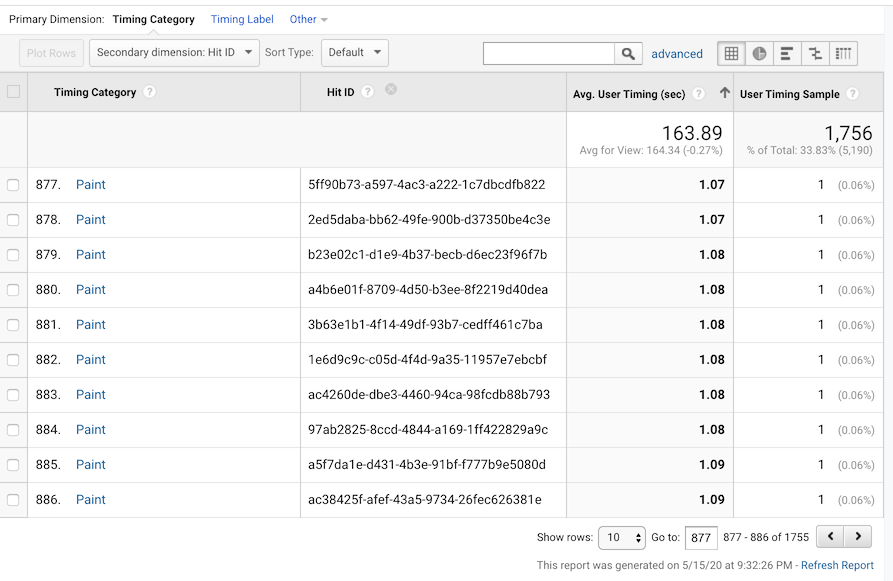Optimize Reporting Precision With Second Dimension in Google Analytics
Understanding exactly how to optimize reporting accuracy with additional measurements in Google Analytics can considerably boost the depth of understandings stemmed from information analysis. By integrating second dimensions tactically, marketers can discover surprise patterns and correlations that may not be immediately obvious when assessing key metrics alone. This nuanced technique allows a much more detailed understanding of user actions and project performance, paving the method for more targeted and efficient decision-making. The utilization of additional measurements holds the essential to unlocking a wealth of useful details that can change the performance of digital marketing methods.
Recognizing Second Measurements in Google Analytics
To boost information evaluation and gain deeper understandings into user behavior, understanding secondary measurements in Google Analytics is essential. Secondary measurements permit individuals to segment and further study information past the main dimension picked. By integrating secondary measurements, analysts can refine their records to expose more thorough info about user communications on a website. For circumstances, while the primary measurement may display the complete number of page sights, adding a second dimension such as 'source/medium' can provide understandings into where the traffic stemmed from. This added layer of info makes it possible for online marketers to evaluate the effectiveness of various advertising projects or channels in driving web traffic to the internet site.
In addition, understanding second measurements is vital for creating much more personalized records customized to specific service objectives. By selecting the best combination of secondary and main measurements, experts can reveal patterns, trends, and correlations that may otherwise continue to be hidden. This nuanced method to data evaluation encourages organizations to make informed decisions based on a detailed understanding of customer actions throughout numerous measurements.
Exactly How to Use Secondary Measurements
When leveraging second measurements in Google Analytics, the useful application involves selecting certain information criteria to more improve insights beyond the primary measurement's range. To apply second dimensions successfully, begin by accessing the report or dataset where you desire to dig deeper right into the data. Remember that second dimensions help give context and granularity to your main dimension information, enabling you to remove more actionable and meaningful understandings from your Google Analytics reports.
Leveraging Second Measurements for Insights
Making use of additional dimensions in Google Analytics permits a more comprehensive evaluation of information, providing valuable understandings beyond the main measurement's range. By leveraging secondary measurements, users can dig much deeper into the efficiency metrics of their site or app, revealing hidden patterns and fads that may not be quickly evident when just checking out key dimensions.
One key advantage of utilizing second measurements is the capability to section and filter information more precisely. This can assist analysts and marketing experts much better understand the behavior of particular individual sections, such as new visitors versus returning site visitors, or website traffic coming from different geographic locations.
Moreover, additional measurements make it possible for customers to contrast and comparison numerous information factors within the very same report, offering an extra holistic sight of efficiency (Secondary Dimension in Google Analytics). Pairing the main dimension of touchdown web pages with additional dimensions like devices or demographics can disclose which web pages are most efficient in engaging customers on various gadgets or from various market groups.
In significance, leveraging second dimensions in Google Analytics empowers users to remove richer understandings from their data, leading to even more informed decision-making and ultimately, improved efficiency.
Finest Practices for Secondary Measurements
When analyzing information in Google Analytics, incorporating additional dimensions effectively boosts the depth of understandings originated from the main metrics. To make the most out of secondary measurements, it is vital see this here to comply with best methods that ensure precise and meaningful coverage. First of all, it is necessary to choose second measurements that align with the key metric you are examining. Picking relevant second measurements assists in offering context and a clearer understanding of the information being examined.
In addition, it is recommended to limit the variety of second dimensions used in a single record to stay clear of frustrating the evaluation with as well much information. Concentrating on a few essential additional measurements at once can bring about more focused and workable understandings. In addition, take into consideration experimenting with different combinations of main and additional dimensions to discover special patterns and patterns that may not appear when considering the information in seclusion.
Advanced Evaluation Methods With Additional Dimensions
Checking out detailed data connections with the tactical application of second measurements can reveal nuanced understandings that raise the depth of evaluation in Google Analytics. By combining second dimensions with key data collections, sophisticated analysis strategies can be utilized to remove important details.
In addition, secondary measurements can enhance the evaluation of conversion paths by supplying additional context. Comprehending you can find out more the different touchpoints a user engages with prior to converting can be crucial in enhancing the consumer journey - Secondary Dimension in Google Analytics. By using additional dimensions to look into specifics such as traffic resources or tools used, marketers can tailor strategies to target high-converting channels properly
Conclusion

To boost data analysis and gain much deeper understandings into individual actions, understanding additional measurements in Google Analytics is imperative - Secondary Dimension in Google Analytics. Additional measurements allow users to section and additionally study information beyond the main measurement picked. While the primary informative post dimension may show the overall number of web page views, including a second measurement such as 'source/medium' can provide insights into where the traffic originated from.When leveraging additional dimensions in Google Analytics, the functional application involves picking details information parameters to further refine insights beyond the main dimension's range. Keep in mind that additional dimensions assist offer context and granularity to your main dimension data, enabling you to draw out more actionable and meaningful understandings from your Google Analytics records